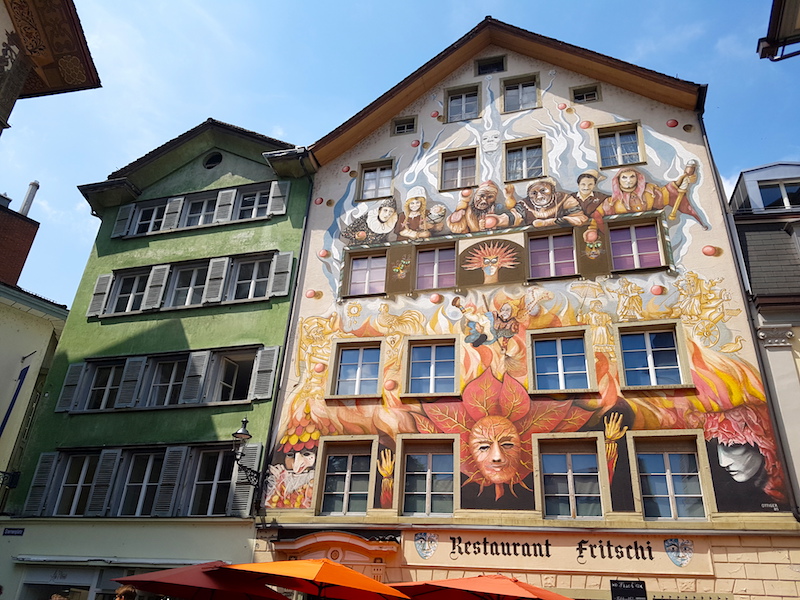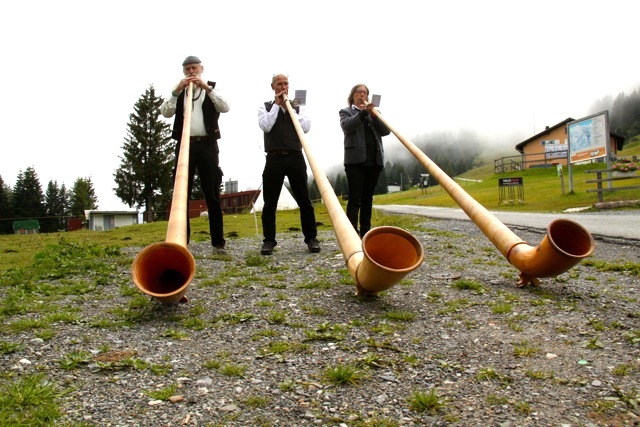The next morning, the countryside beckons and we head out to Viamala Gorge, less than an hour’s drive away. This magnificent ravine, now a popular tourist attraction, was once hated by the peace-loving Swiss for being an evil obstruction in their journey across the Alps, giving it the name of “Bad Path.” Surrounded by 300 metre high cliffs, with the aquamarine waters of the Hinterrhein river flowing through the narrow gaps in the rocks, this spot is a hiker’s delight.

And even for a lazy city slicker like me, the Alpine sunlight fills the canvas with a magic that makes the trudge up and down 321 stone steps totally worth it. At the top, I hesitate for a few brief seconds, but the sunshine glinting off the blue-green water down below is way too enticing. And there are benches provided thoughtfully at the end of every dozen steps or so, where I can rest my weary feet, pretending to be looking for exotic birds and mountain goats, while desperately catching my breath.


Back at ground level after an hour, I have a few hearty swigs of the Roteli, the local cherry liqueur, to revive my sagging energy. Roteli – from ‘rote Kirschen’ or red cherries – is another of Graubünden’s delightful hidden secrets, a potent liqueur made from a blend of fruit schnapps, dried cherries and flavourful spices like vanilla, cloves and cinnamon. It is no wonder that in a few short minutes, my world suddenly feels like a brighter place.
After lunch, it is time to head to the village of Flims, to dip my toes at Lake Cauma. Surrounded by dense woodland on three sides, Lake Cauma reveals itself in all its ‘50 shades of blue’ glory. It is a short and pleasant walk along a shaded forest path from Flims, which in winter is a popular skiing destination. In the offseason summer month during my visit, it is eerily quiet, and I wonder if all the hotels built in the style of traditional Swiss chalets on the main streets are empty.
In absolute contrast, Lake Cauma itself feels like the scene of a village mela when we arrive, families out in full force on that beautiful summer evening. Groups of shrieking young kids are diving off a high rock into the cool water, while others swim and splash about with wild abandon. There are plastic floats of all shapes and sizes, with adults and children alike gliding placidly on the calm water, also getting a tan in the process. A few boisterous groups are trying their hand at water sports like paddling and canoeing, but on the whole, most people seem content to just lie down on blankets with their eyes closed.


It is only much later that I learn the local name for this lake: ‘See der Mittagsruhe’ – roughly translated as ‘Lake of mid-day rest’. And suddenly the tableau I had witnessed begins to make sense.
Back in Chur, I tuck into a traditional Grisons dinner of Maluns (fried potatoes scraps with applesauce and Alpine cheese), Capuns Sursilvans (stuffed cabbage rolls cooked in milk topped with cheese and topped with cheese), and Pizzoccheri Nero (buckwheat noodles with vegetables, topped with foaming butter) – all of which taste better than they sound. I wash it all down with a glass or two of local Swiss wine from the region.


And suddenly, I am bursting with a desire to tell the world to come and discover my little Swiss secret for themselves.




One thought on “The curious case of Chur 2”